Mid August means we’re over the hump of winter and rolling along into spring.
The wattle scent is in the air, the blossoms are emerging and the jacarandas are about to drop their leaves. It won’t be long before we are enjoying the beautiful late spring flower show these South American natives produce annually.
Sydney is one of the best places to see jacarandas in all their glory. And this year we will again be running jacaranda cruises all through spring. There are seats still available so call
Ross Tours on 1300 233 200 to reserve
your place
It’s Time To:
Colour the hydrangeas
Hydrangeas are the litmus paper of the natural world and blue or pink depending on the pH of the surrounding soil. If colour matters, add blueing tonic
for blue and garden lime for pink fortnightly through August.
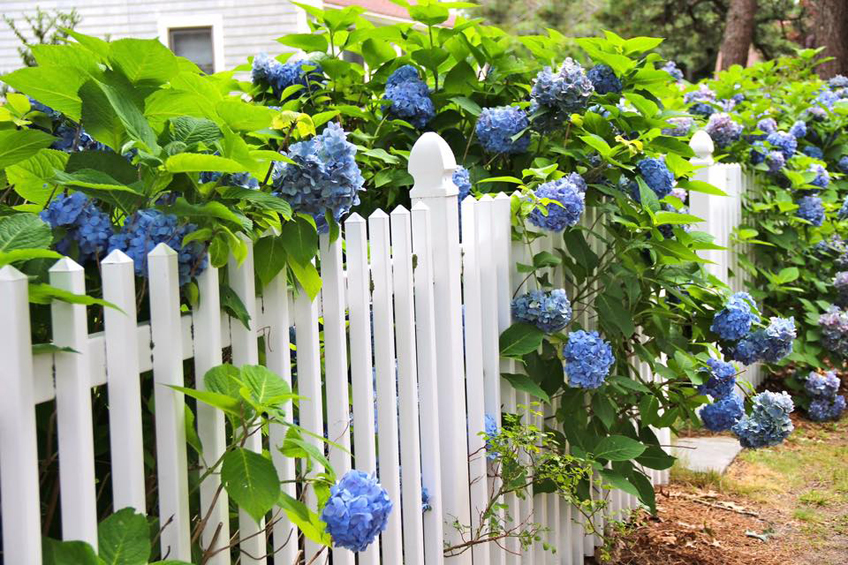
Tend to your strawberries
Discard strawberry plants that are more than three years old. They’re finished, and won’t produce fruit for you anymore. Prune all others back hard to
encourage new growth. Cut off some runners and replant to increase your yield. Feed them up with a good fruit fertiliser like Giganic from Neutrog.
Trim the flowering natives
Grevilleas and bottlebrush need regular trimming (straight after flowering). Forget this at your peril. This will help the longevity of your shrubs and
contain them to a height where so you can appreciate the flowers. You may need to sacrifice some of the last flowers, but you’ll be rewarded for it
next year. Grevillea pruning should start in the first year of the plant’s life and be an annual event thereafter. Feed them with a specialised native
fertiliser like Bush Tucker from Neutrog.
Prepare the veggie patch
Prepare veggie beds for summer produce. For summer’s fruiting vegetables we use sulphate of potash, blood and bone, dolomite and Dynamic Lifter from Yates as per the ratio on the back on the packet. Dig in and leave two weeks
before planting out seedlings.
The Bush Garden
Grevillea lovers, meet Grevillea ‘Dorothy Gordon’.
She's a compact grevillea to 3m high x 2 wide, great informal hedging and screening. It has large two toned flowers lilac/pink and beautifully contrasting
dark burgundy, flushes throughout the year, as well as bronzed new foliage growth. Dorothy is a magnet to honey eating birds and mammals, she's drought
tolerant and grows well on a wide range of soil types. Performs best in a sunny spot with well drained soil, but can take light shade. Feed with a
good native fertiliser like Bush Tucker from Neutrog in spring.
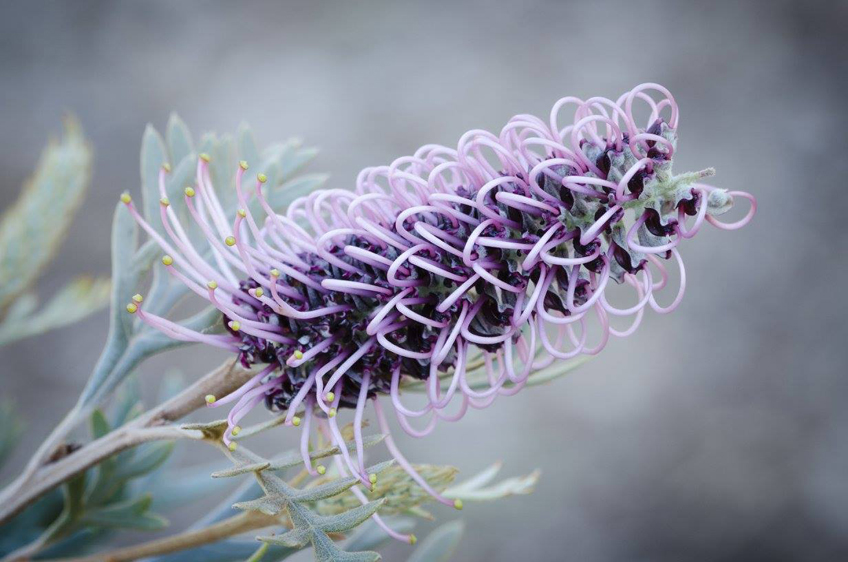
Grevillea 'Dorothy Gordon'. Photo - Shutterstock.com
Read more about the Dorothy Gordon story here. Find out how she popped up. https://myallparkbotanicgarden.com/plants-in-the-garden/grevillea-dorothy-gordon/
Plants available at Sydney Wildflower Nursery, The Wildflower Place, and Newcastle Wildflower Nursery.
Bugwatch
Scale
Scale insects are some of the most common garden pests around. They attract other pests and suck the vigour from your plants, but they are easy to control
and even easier to prevent.
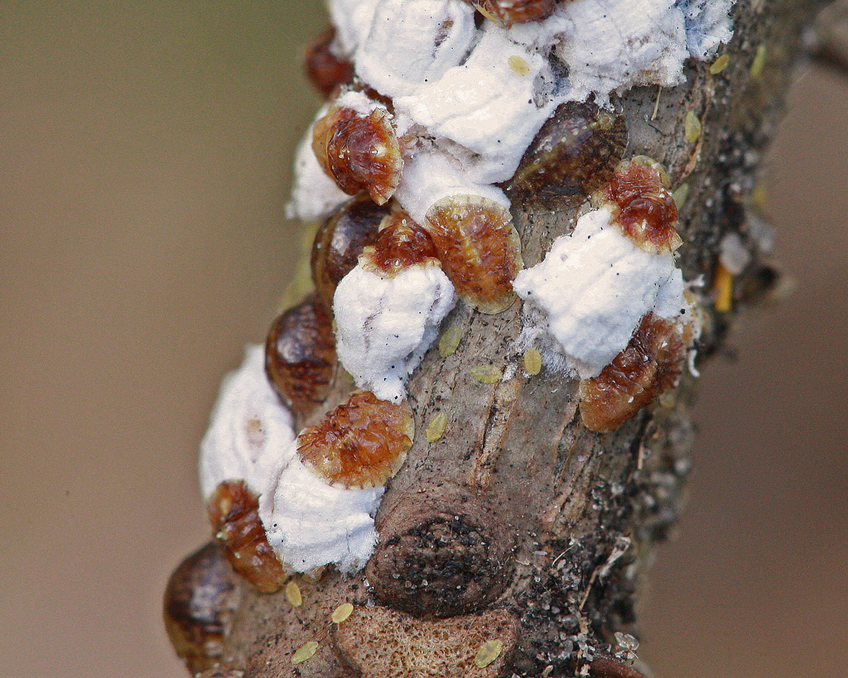
Citrus snow scale. Photo - Mary Keim
Scale insects damage plants by feeding on sap and secreting honeydew which causes sooty mould. This in turn can cause leaf drop and dieback. Ants feed
on the honeydew and act as bodyguards for the scale, keeping away natural scale predators such as lady bugs and wasps. Eggs hatch into crawlers, which
can be carried on the wind to other plants. Remember, plants under stress are more susceptible to scale attack so spoil them with a dose of seaweed
solution and a light feed in spring and autumn.
Eco-oil won't be enough to control a large infestation. Start treating with Yates Scale Gun as per instructions on the package until they are gone. Continue spraying with Eco-oil
every fortnight to prevent another infestation.
Want more information about tackling a scale problem? Read our article, Bugwatch: Scale, on the Garden Clinic website.
In the Veggie Patch
Tomatoes
There is much joy to be had in picking sun-ripened, richly flavoured sweet tomatoes from your own garden.
I want to inspire you to grow tomatoes, but I’d be fibbing if I told
you it was going to be easy. And it doesn’t necessarily have to do with the skill of the gardener: weather and climatic variations can cause either
huge successes or dismal failures. But it’s definitely worth the effort, and there are a few golden rules to follow that will help.
Firstly, give them a good position with plenty of sun in a bed that is well prepared with aged manure and organic matter dug in.
Secondly, give them something to grow on like a tepee or tunnel. Tomatoes are vines and will climb a structure, even a light one, and getting them up off
the ground will reduce the occurrence of fungal disease.
And finally, control the pests that love to devour tomatoes like fruit fly, thrips, and aphids.
There are so many beautiful tomato varieties to choose from. We've listed a few in our article, 'Tomato Time'
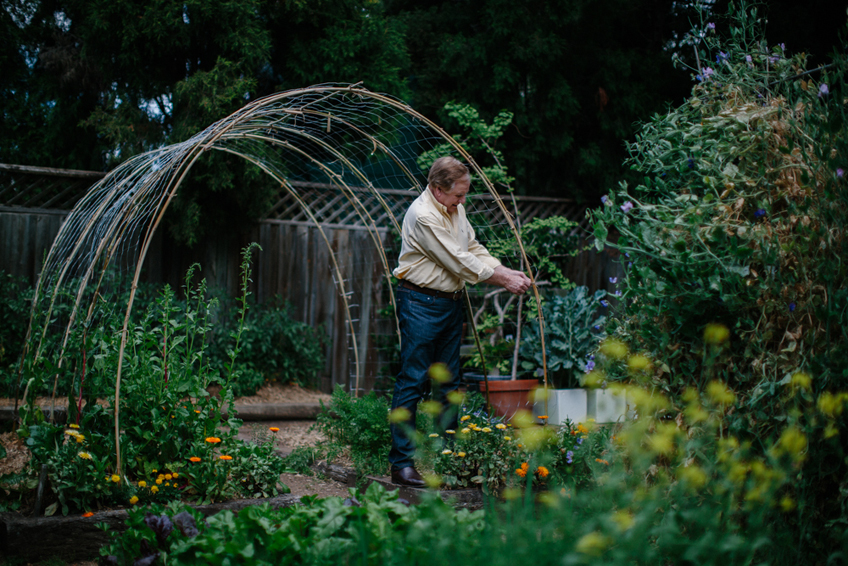
Graham ties the fencing mesh to the dried bamboo arched over the pathway between two garden beds for the tomatoes to grow on. Photo - Luisa Brimble
Garden News
Her Majesty’s Royal Gardener, Mark Vasilewski talks about ‘Britain in Bloom’
One of the largest community gardening events internationally, RHS Britain in Bloom is a nationwide community gardening campaign to transform cities, towns
& villages. It's been helping people to improve their local environment since 1964.
More than 1,600 cities, towns, villages and urban communities take part each year to show off their achievements in environmental responsibility, community
participation and, of course, horticultural achievement.
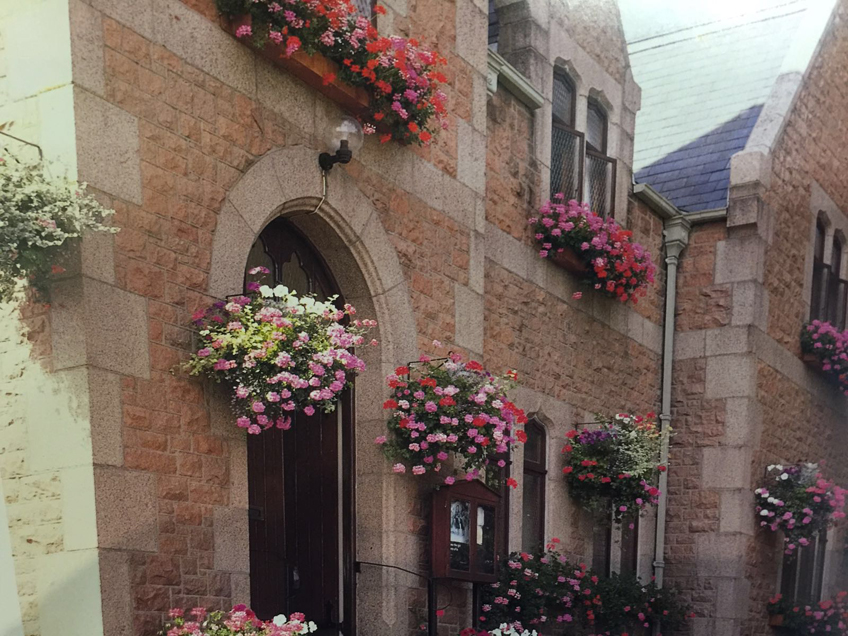
Villages and urban communities alike take part each year to show off their achievements.
The campaign runs year round and participating groups report a wide range of benefits such as cleaner, greener and safer surroundings, a growing sense
of community pride, and increased commercial enterprise and tourism. Britain in Bloom: transforming local communities highlights the benefits that
participation brings.
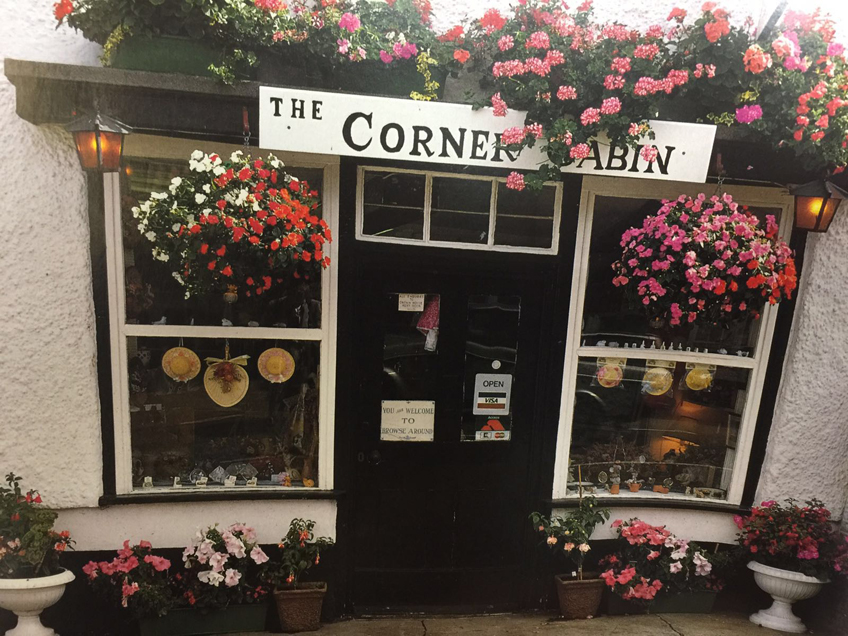
Participating groups report a wide range of benefits such as cleaner, greener and safer surroundings.
Communities of all sizes can take part, from small villages to large cities. Some groups are entirely run by volunteers and some work in partnership with
their local council. Every summer participants are assessed for efforts in the areas of horticultural achievement, community participation, environmental
responsibility.
Groups start by taking part in their Region / Nation campaign. Those that do well at this level may then be selected to take part in the UK Finals, which
are organised by the RHS.
From the 1,600 communities that take part in the regional campaigns, roughly 80 are selected to go into the annual UK Finals - RHS Britain in Bloom.
Ekka (Royal Queensland Show) Flower & Garden exhibition at the old Museum
The Royal Queensland Show (Ekka) has gone back to the future in a celebration of heritage and innovation, welcoming The Old Museum back to the show for
the first time in 119 years.
For the first time since 1897, The Old Museum will return to its original home for the 10 days of show, transformed for Ekka into the new Flower and Garden
Exhibition presented by Envy Lawn “Grown for Life” and the Quilts Across Queensland precinct, with a special Ekka rose being cultivated to mark the
occasion.
Built for the RNA in 1891, The Old Museum was originally called the Exhibition Building and Concert Hall. The Queensland Government took control of the
building and grounds in 1897, when the RNA was forced into liquidation by the economic depression. It then became home of the Queensland Museum in
1899.
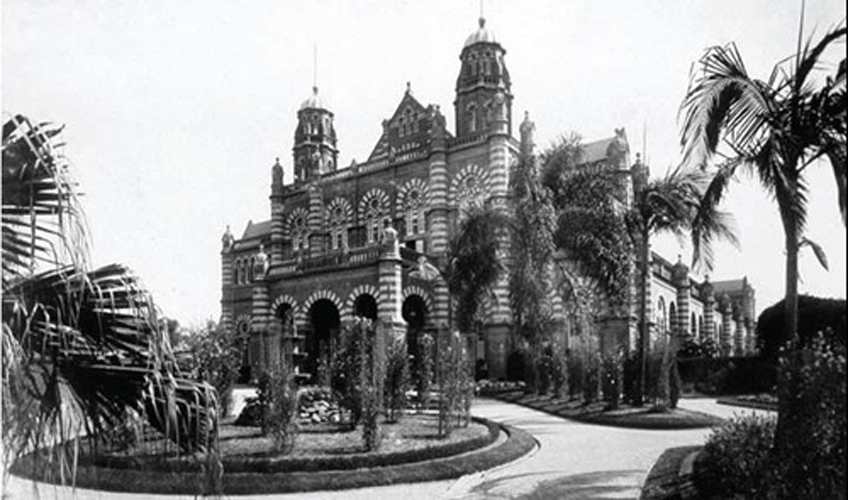
The OLd Museum back in it's glory days. Photo - www.ekka.com.au
The Old Museum is already well known for its gardens, which include several heritage rose garden beds.The gardens are in the process of being restored
by the RNA, with help from Queensland rose expert Paul Hains.
The RNA looks forward to welcoming people back to The Old Museum to enjoy the many and varied horticultural delights at this year’s show. To celebrate
The Old Museum coming home to Ekka, the RNA is releasing a brand new rose called the 'Royal Queensland Show.’ It’ll be planted in The Old Museum rose
garden on the first morning of show (August 5) and green thumbs will be able to purchase it or put their name on a wait list as more of the roses are
grown.
The exhibition is well underway and closes after the last talk at 4pm Sunday.
Come away with us
Gardens of North India
The opulent palaces, towering forts, beautiful gardens, vibrant colours and incredible bazaars of India have cast their spell on Libby Cameron. She invites you to join her on the Gardens of North India tour - a wonderfully luxurious adventure to Delhi, Agra, Ranthambore,
Udaipur and Jaipur.

the glorious Taj Mahal
NSW Spring Festivals
A plant lover’s delight as we follow the trail of flower festivals across NSW meeting friendly gardeners along the way. We start in Southern Highlands for Tulip Time, then Canberra for Floriade, then Cowra to catch the Cherry
Blossom and finally to the Leura Gardens Festival.
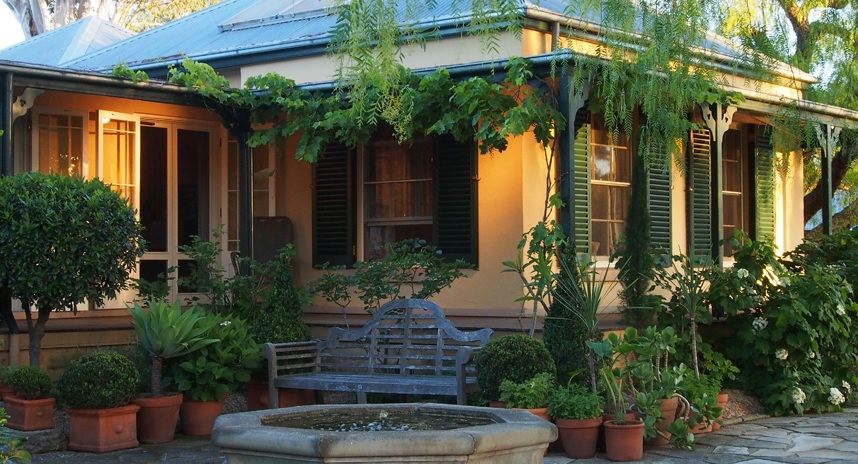
We visit the beautiful Glenmore House on the NSW Spring tour.
For more information on this incredible tour go to the Ross Tours website, or call Royce or Roslyn at Ross Tours to reserve your place on 1300 233 200 for more details on the tour.